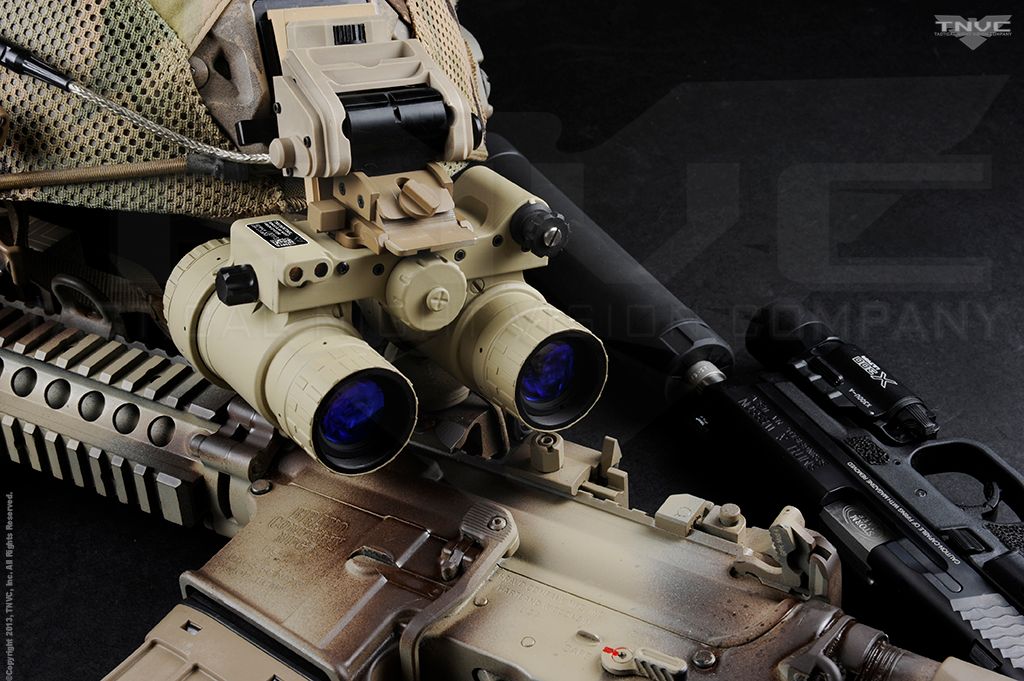
The development of the Sentinel system began a while back as a way to provide Warfighters of the Special Operations community a better alternative to the ubiquitous ANVIS-9 night vision goggle. Like their predecessors, the AN/AVS-6, the ANVIS-9 was developed for aviators and aircrews to use in the relatively insulated environment of aircraft. They run off external power and are smaller and lighter than most goggles worn by ground forces. The ANVIS goggle is a dual tube system, offering pilots much better depth perception than single tube devices, which is required when you are flying nape of the earth, dodging power lines and trees. They feature different image intensifier tubes and lenses than conventional ground goggles, picked to provide unmatched clarity to the user. For this reason, SOF operators began requisitioning ANVIS goggles for ground use.

While there are many benefits to running ANVIS goggles, they are a bit like a fish out of water when used on the ground. ANVIS systems are fragile. They were never designed to be used outside the aircraft. And let’s face it, ground combat is a lot less forgiving on individual equipment than orbiting the battlefield at 5,000 feet. ANVIS goggles rattle and often feel loose between the tube housings and the bridge. They are not water or weatherproof, and their housings are not designed to absorb impact. All of this adds up to a liability on the ground. And, while many SOF units can simply turn in a damaged set of goggles for repair or replacement, it still sucks to have your goggles shit the bed on you in the middle of a mission.
Often times, ANVIS goggles would be field modified with epoxy resin and silicone in an effort to make them water resistant. While this method works, it also anchors the interpupillary adjustment, prohibiting the goggles from being issued to other operators with different facial geometry. Regardless, nothing could be done with the brittle/rattling body housing… until now.
The Sentinel was developed by Adams Industries with input from SOF personnel on the military and law enforcement side. Despite their fragility, the ANVIS system is still coveted by operators who cannot deny its benefits. So, the ANVIS system was used as a starting point from which to design a completely new goggle; addressing and fixing the issues of the legacy system, while adding new features and backwards compatibility. The tubes in current ANVIS goggles are some of the best things about them. So, the Sentinel is designed to accept tubes from older/beat-up ANVIS goggles and upgrade the user to a brand new improved function goggle for ground operations (more on that later).
The Sentinel starts with the familiar ANVIS platform: a bridge hub that supports two independently-moveable optic housings. This allows for easy interpupillary adjustment. The housing is machined from a super strong composite block of Delrin polymer for maximum strength in a lightweight package. No longer will your night vision goggles be at the mercy of a thin-walled injection-molded housing. The bridge is the most fragile part of the legacy system. Realizing this, the Sentinel is further armored with front and rear machined aluminum impact plates. The higher quality and more rugged materials also improve the overall fit of the system, eliminating the pesky wobble/rattle from the old ANVIS goggles. The Sentinel simply feels solid while not compromising on any of the adjustability of its predecessor.
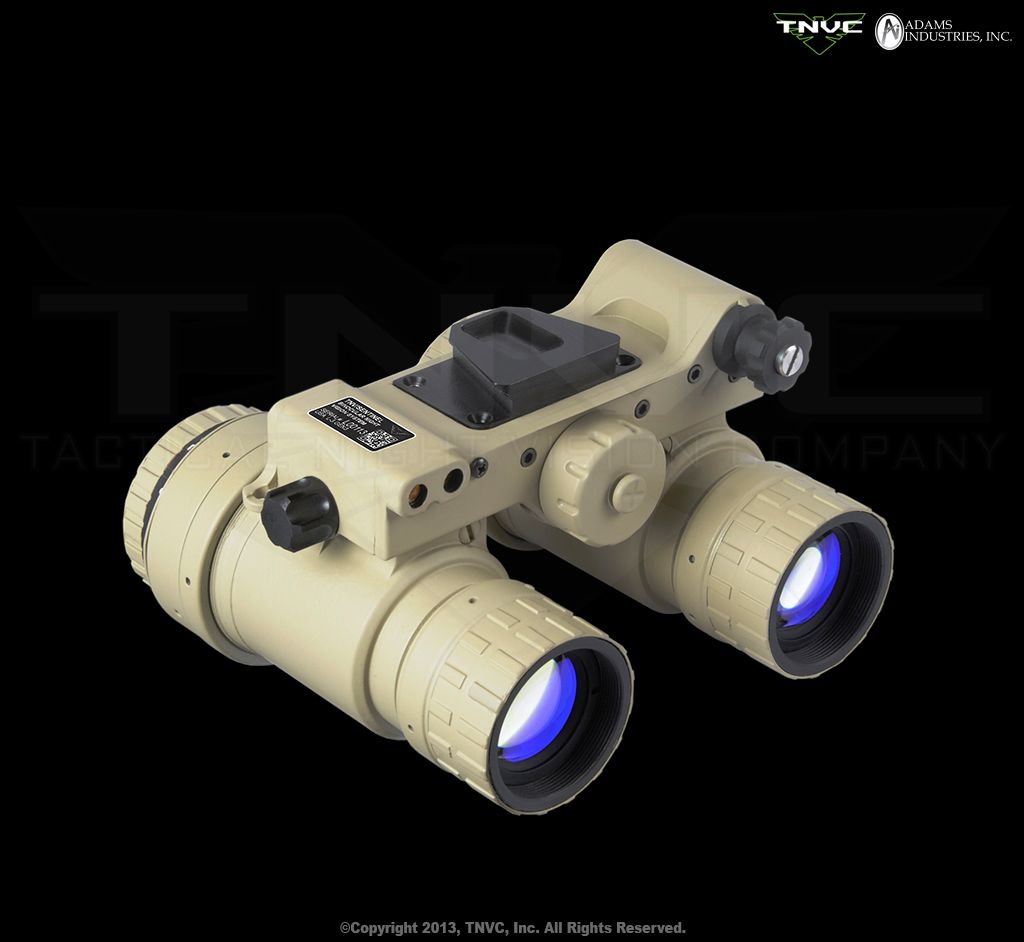
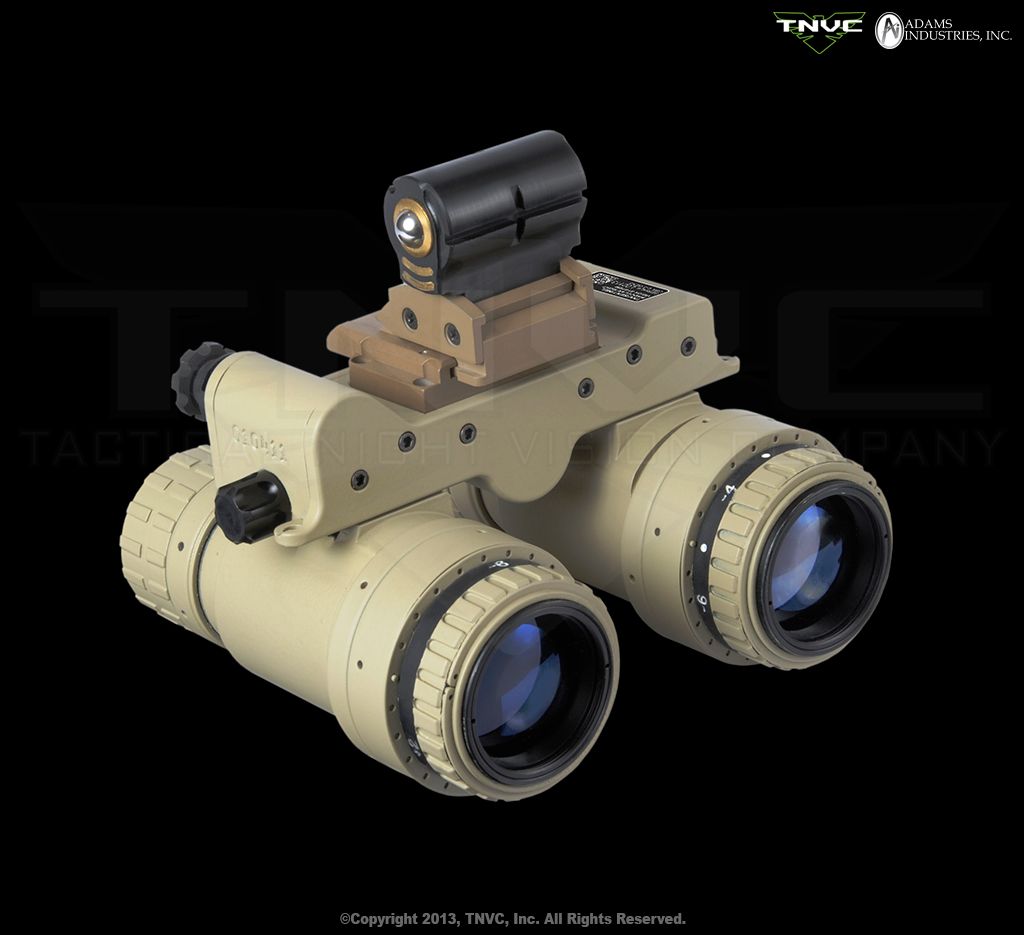
On top of the up-armored housing, the Sentinel boasts some other impressive features. First, the addition of an onboard set of infrared illuminators provides ground personnel with a capability not found in the ANVIS goggle. It also uses PVS-14 optic assemblies, making it compatible with a ton more accessories. But, the most noticeable new feature is the field-swappable mount interface. The Sentinel comes with both dovetail and ANVIS mount adapters. They can be quickly and easily changed out by the operator in the field by removing the four Philips screws that secure them to the bridge.
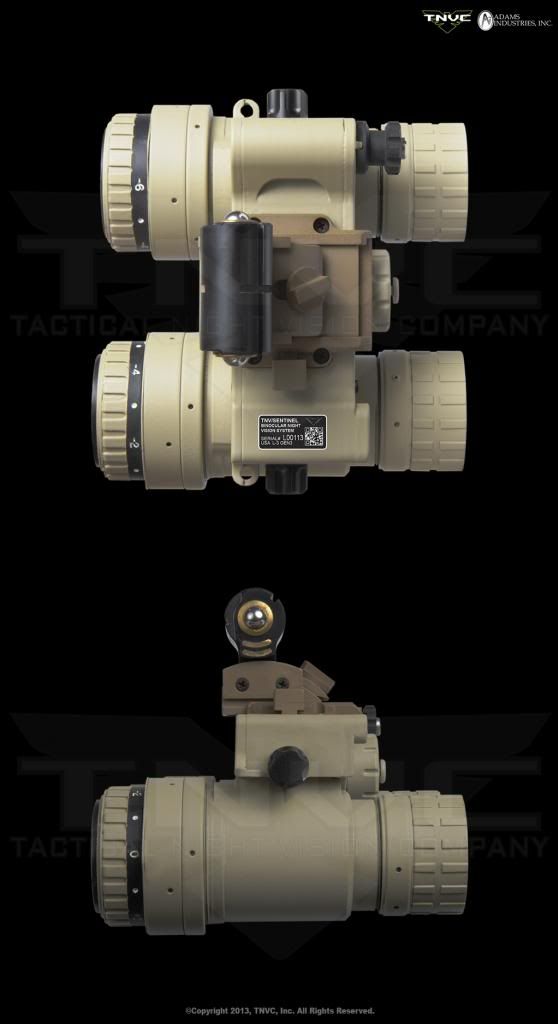

The standard dovetail interface allows users to attach the Sentinel to any dovetail helmet mount such as the popular Wilcox L4 G24 or Norotos INVG. In this configuration, the Sentinel is powered by an on-board 3 Volt CR123 lithium battery for up to 30 hours continuous use. This is the lowest profile, lightest way to run the Sentinel.
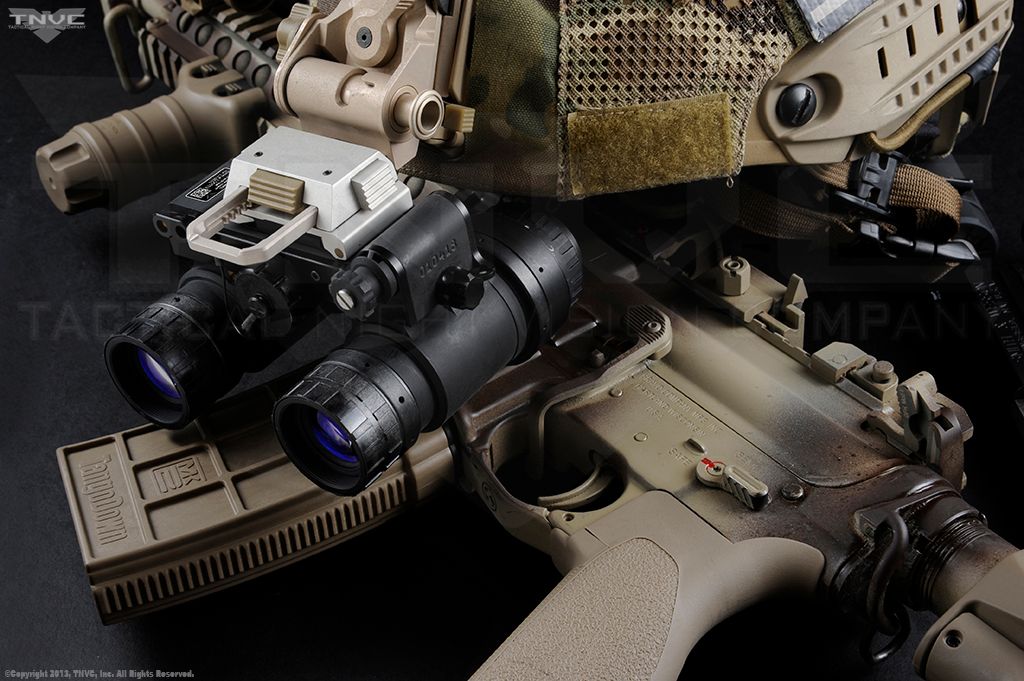
But, for users of the legacy ANVIS goggle, the ANVIS mount interface is a better option. This adapter features the standard ball detent interface that attaches to USGI ANVIS helmet mounts fielded by many SOF and aviation units. In this configuration, the Sentinel is powered by a remote battery pack on the back of the user’s helmet. The run time is longer than the previous configuration and depends on what type of batteries are being used; AA or CR123. We prefer to run the Sentinel in this configuration due to the longer run time. It works perfectly with Adams Industries legendary Surface ANVIS Mount (SAM) and Ground Warrior Battery Pack (sold separately at TNVC at our everyday low, low prices). But, the features don’t stop there. The ANVIS mount interface has added adjustability. Unlike the non-adjustable ANVIS goggle/mount, the Sentinel interface has tilt and fore/aft adjustability, allowing the goggle to get closer to the user’s face than the ANVIS. If using the SAM mount, the operator has vertical adjustment as well.
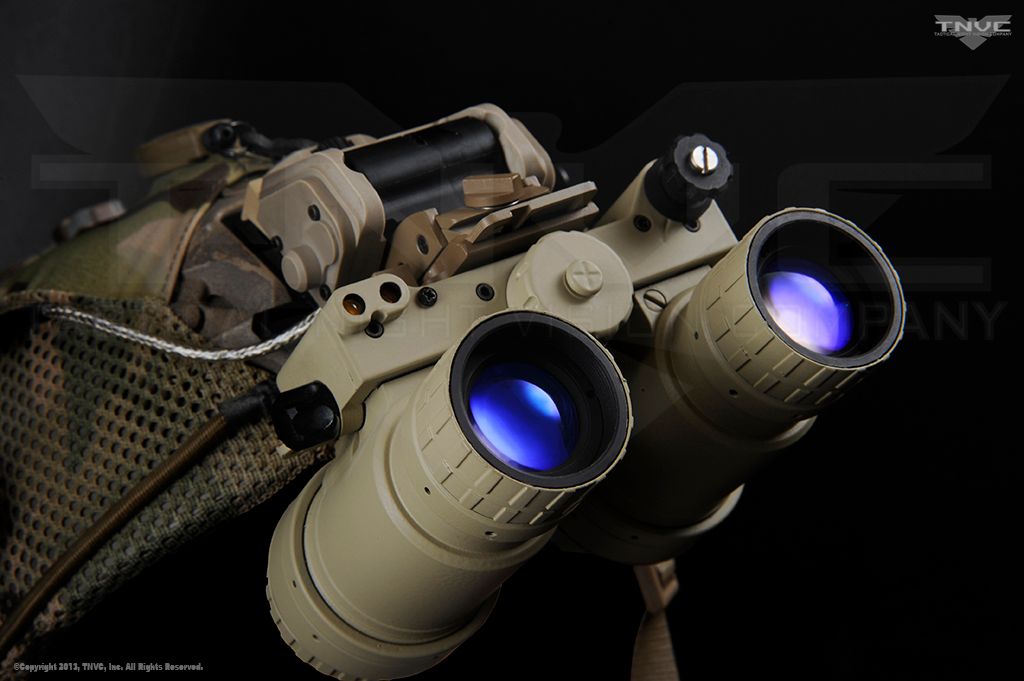
We are building our TNV/Sentinel goggles with Gen3 L3 OMNI VIII MX10160 Infinity image intensifier tubes for unmatched clarity, resolution, focal distance, and durability. We hold these tubes to the same specs as our famous TNV/PVS-14 tubes. We choose matched pair tubes for the best possible image experience.
We are also offering our TNV/Sentinels in our proprietary FDE/Tan finish that coats all main parts of the system. Again, this is the same process used in our famous TNV/PVS-14 line and is a proprietary option for TNVC Sentinel goggles. This coating is professionally applied at an automotive paint facility. Several coats of matte paint are applied and topped off with a matte clear coat to provide a robust product that stands up to field abuse.

TNV/Sentinel (Black): $7,613.45
TNV/Sentinel (Tan): $7,713.45
SPECS:
Manufacturer:
Adams Industries (OEM)
Dimensions:
4.5″(L) x 4.7″(W) x 2.9″(H) – Dovetail Installed, 4.5″(L) x 4.7″(W) x 4.0″(H) – Ball Detent Installed,
Weight:
20.8 oz. (Dovetail), 23.1 oz. (Ball Detent)
Finish:
Matte Black or FDE, Corrosion Resistant
Power:
One (1) CR123 3V Lithium Battery (Dovetail) or External ANVIS Battery Pack (AA/CR123)
Battery Life:
Approx. 30 Hours at Room Temp. w/ Standard CR123
Waterproof:
66′
Standards:
MIL-STD-810F Compatible
Warranty:
2 Year Warranty (Tube and System)
Operating Temp:
-40°F to 113°F
Storage Temp:
-58°F to 140°F
OPTICAL:
————————————————————
Generation:
Gen3 U.S. OMNI VIII
Intensifier Tubes:
L-3 MX10160 Infinity (x2)
Resolution:
64 lp/mm (Typical)
Film:
Thin-Film
Gate:
Auto
Gain:
Automatic Brightness Control
Magnification:
1X
FOV:
40º
Objective Lens:
F/1.2
Ocular Lens:
EFL 25mm
Diopter:
+2 to -6
Focus:
9.8″ to Infinity
Included:
Tube/System Data Sheet, Soft Carry Case, Operator’s Manual, Neck Cord, Objective & EP Lens Caps (X2), Eye Cups (X2), Demist Shields (X2), Sacrificial Windows (X2), Tissue, One Lithium AA Battery, Dovetail Mounting Adapter, Ball Detent Mounting Adapter

Stay tuned in the next couple weeks as we will begin offering our ANVIS upgrade program. Individual customers or entire departments/units will be able to send in their old ANVIS goggles to be completely retrofitted with a brand new Sentinel housing system. Customers will only be charged parts and labor since we will be salvaging the working tubes from your existing goggles. This will be a great option for folks with broken ANVIS goggles or who simply want to address a problem before it occurs. Look for this option on our website in about two weeks. But, if you can’t wait that long, go ahead and email us and we can get you squared away.

